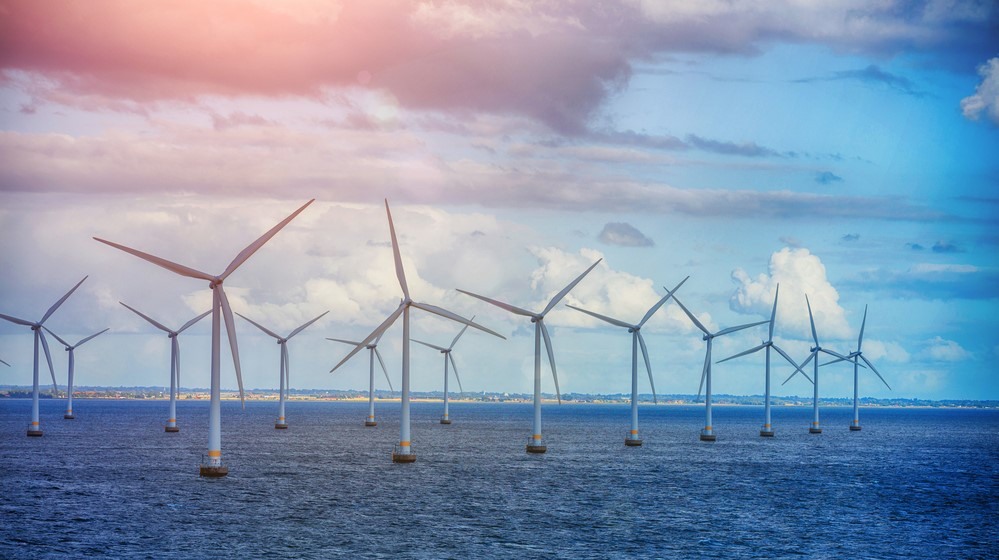Floating Offshore Wind Energy
Published on 18 Nov, 2019

The need for environment-friendly resources and technology is rising. Renewable energy resources are gaining popularity, with wind energy being the second largest source. Though offshore wind is the fastest growing source, floating offshore wind source is also emerging as a powerful source of energy. Platforms and turbines are being developed to garner this energy. Though the resource faces challenges in implementation, it is a viable and economic option, and if a few measures are taken, it can easily become a main contributor of renewable energy.
Need for Renewable Energy
Renewable energy has been established as a mainstream contributor in the global electricity generation mix, and is viewed as a sustainable mechanism to address rising temperatures, climate changes, and environmental issues.
Globally, renewable energy sources are being used for a variety of applications, which traditionally relied heavily on fossil fuels. Renewable energy recently accounted for two-thirds of global investment in power generation. Hydro, solar, photovoltaic, and wind energy dominates the renewable energy generating capacity worldwide. The economics of wind and solar power and its cost-efficient storage are paving the way for a sustainable future energy system.
Wind is the second largest source of renewable energy after hydro, with a share of around 25% in the total renewable energy capacity globally. Onshore wind turbines dominate the global wind energy capacity, with more than 96% share in the overall installed wind capacity. However, over the last few years, the offshore wind capacity has witnessed significant growth, driven by reduction in installation costs and improvement in technology.
Offshore Wind Energy: Fixed-Bottom versus Floating Offshore Wind Turbines
Offshore wind is one of the fastest growing renewable energy sources, accounting for about 4% of the global cumulative installed wind capacity in 2018. Europe is a leader in offshore wind capacity installation, with the UK contributing more than 35% to the total installed offshore capacity worldwide, followed by Germany with roughly 27%. Offshore wind turbines are of two types: fixed bottom and floating.
Fixed-bottom offshore wind turbine technology is more mature than that of floating offshore wind (FOW) turbine, and currently dominates offshore wind energy installations. The former type is easy to install than FOW turbines. In addition, fixed-bottom offshore wind turbines can be installed in near-to-shore sites vis-a-vis FOW ones, which are more technically complex and installed deep in the sea.
FOW farms are generally installed in complex seabed conditions with water depths of more than 40 m. Installation of wind turbines in deep sea poses many challenges, a major one being the development of a platform that can withstand turbulence in deep sea. Other difficulties include the laying of high-voltage electrical transmission lines as well as installation, operations, and maintenance of wind turbines in deep sea.
Evolution of Floating Offshore Wind
Wind speed is higher in deep sea compared to near the shore or onshore; therefore, FOW turbines access 80% more wind than its fixed-bottom counterparts. This allows higher capacity utilization of wind turbines compared to fixed-bottom offshore and onshore wind turbines.
To utilize the higher wind speed in deep sea, FOW turbines were conceptualized between 2009 and 2016 in Japan, Spain, Norway, and Sweden, demonstrating six full-scale prototypes in total. Successful demonstrations of these prototypes accounted for over 20 MW of the installed capacity by 2016. Since prototypes provide a full-system simulator or a relevant part of the desired system, the pre-commercial phase of FOW turbines began in 2017 with the deployment of Hywind Scotland, the first fully operational FOW farm with a capacity of 6 MW.
The FOW turbine installation and maintenance cost is significantly higher than the fixed-bottom offshore wind turbine. Hence, due to the higher cost of installation, most FOW turbines require significant government support to reach commercial readiness and realize the cost reduction potential in the near term, including R&D activities.
Technology Advancement
The two key components of FOW are platforms and turbines. Over the years, a number of companies worldwide have developed different types of platforms for FOW. Some of the most popular platform typologies are barges, spar buoys, semi-submersibles, tension leg platforms, multi-turbines/hybrid waves, and semi-spar. Most of these technology are developed based on the platforms used by oil and gas companies for drilling oil wells in deep sea.
Larger wind turbines with a capacity of more than 6 MW are a good fit for FOW due to high wind speeds. With advancement in wind turbine technologies, the development of high-capacity turbines can further lower the operational cost of FOW turbines. Turbine manufacturers recently expanded their wind turbine portfolio from 6 MW rated wind turbines to 12 MW ones that feature a 220-m rotor and 107-m blade, having a gross capacity factor of more than 60%.
Challenges to Floating Offshore Wind
Despite the advantages of floating wind farms over fixed-bottom offshore wind farms, they face opposition from local residents. The energy source presents a danger to the marine ecosystem and would cause a possible reduction in fishing zones due to the electromagnetic field from high-voltage power lines. The lack of specialized vessels with expertise and delay in environmental impact assessment reports are other major challenges faced by project developers.
Future Roadmap
The Global Wind Energy Council (GWEC) estimates the global FOW capacity to be approximately 6 GW by 2030. The US Department of Energy's National Renewable Energy Laboratory (NREL) expects that multi-turbine arrays of 12–50 MW projects in the US, China, and Europe would be commercial by 2023. Furthermore, according to NREL, floating arrays of more than 400 MW are expected to be fully commercialized in the US by 2024.
FOW has viable and economical attractiveness to expand the horizon of offshore wind energy, provided that cost reduction is achieved at a faster pace than currently expected.

